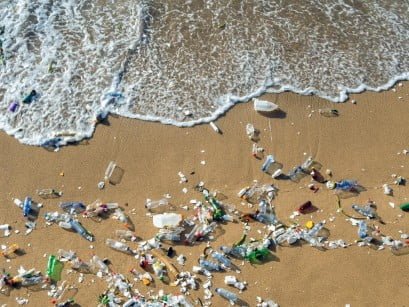Study finds over 170 trillion plastic particles floating in oceans, forming polymer plume
According to a recent study, the amount of plastic pollution in the world’s oceans has grown significantly, with over 170 trillion plastic particles currently floating in the water.
This is a stark increase from 2014, when it was estimated that there were only 5 trillion plastic particles in the ocean.
The majority of these plastic particles are microplastics, which are less than 5mm in diameter.
Microplastics are particularly dangerous to marine life because they do not break down easily and can harm marine organisms that mistake them for food.
This can lead to a loss of biodiversity and disrupt the balance of ocean ecosystems.
Highlights of the Study
- Researchers analyzed plastic pollution data from 12,000 ocean stations in 6 marine regions from 1979 to 2019.
- They estimated the current amount of microplastics in oceans and how their concentration has changed over the years.
- Plastic particle count varied from 1990 to 2005, but remained relatively stable.
- International laws such as MARPOL Annex 5 enforced against sea trash dumping were effective in the 1980s and 90s.
- Since 2005, more than 5 million tons of new plastic have been produced, leading to increased pollution.
- The study calls for a strong, enforceable UN treaty on plastic pollution focused on prevention rather than clean up and recycling.
How micro plastics impact marine life and oceans
- Microplastics have been found in various marine organisms, from phytoplankton to whales and dolphins.
- The presence of microplastics in marine organisms may pose a risk to their health.
- Ingested plastics can cause chemical problems by releasing chemicals into organisms.
- Microplastics have the ability to absorb hydrophobic compounds such as DDT, PCBs, and other industrial chemicals, which may be released when ingested.
- Microplastics can also disrupt the carbon cycle of the oceans.
Policy Interventions
In 1988, the International Convention for the Prevention of Pollution from Ships added Annex V, which established legally-binding agreements among 154 countries to end the discharge of plastics from naval, fishing and shipping fleets.
These interventions were followed by the United Nations Convention on the Law of the Sea in 1982 and the Convention on the Prevention of Marine Plastic by Dumping of Wastes and other Matter in 1972.
In 1991, the Plastic Industry Trade Association launched ‘Operation Clean Sweep’ with the goal of zero loss of plastic pellets, powders and flakes from factories with decreasing pellet ingestion in biota observed. However, these and others were voluntary agreements.
Cost-effective solutions to manage plastic waste differ considerably across countries. Various solutions to the plastic pollution problem have been proposed at local, national, and regional levels.
Despite these efforts, “a global evidence-based strategy that includes practical and measurable interventions aimed at reducing plastic pollution does not yet exist,” said a paper published in Science on July 23, 2020.
On March 2, 2022, heads of state, ministers of environment and other representatives from UN member states adopted a resolution to end plastic pollution and forge an international legally binding agreement by 2024. The resolution looked at the full lifecycle of plastic, including its production, design and disposal.
Breaking the plastic wave, a 2020 report by Pew said we can cut annual plastic flows into the ocean by about 80 per cent in the next 20 years by applying existing solutions and technologies. There is no single solution to achieve this goal; rather, the plastic wave can be broken by taking immediate, ambitious and concerted actions.
Plastic pollution in the world’s oceans has reached unprecedented levels over the past 15 years. A significant increase has been observed in the presence of oceanic microplastics after 2005.

